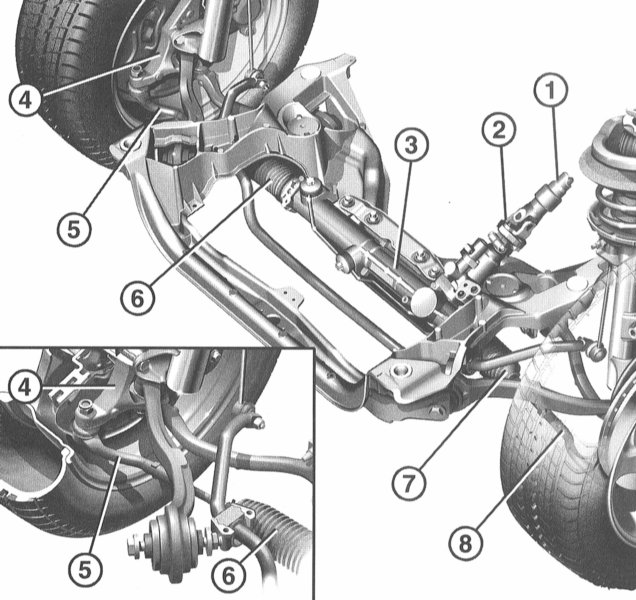
Steering:
1 - steering column;
2 - cardan joint;
3 - rack and pinion steering gear;
4 - steering knuckle right;
5 — steering draft right;
6 - protective cover right;
7 — protective cover left;
8 — steering draft left.
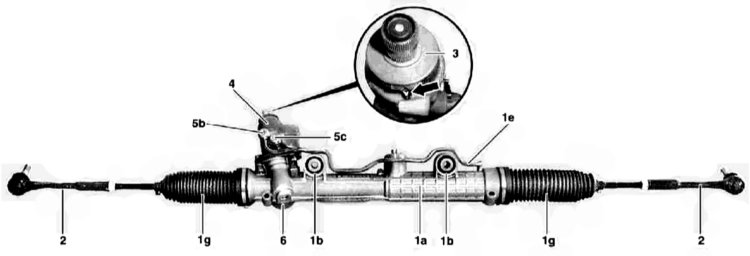
Rack and pinion steering:
1a - steering gear housing;
1b - rubber pads of supports;
1e - oil lines;
1g - protective covers with mounting clamps;
2 - steering rods;
3 - cover with marking of the central position of the rack and pinion mechanism (arrow);
4 - body of the bladed gate and control bushing;
5b - connector of the right pressure chamber;
5c - connector of the left pressure chamber;
6 - steering rack backlash compensator.
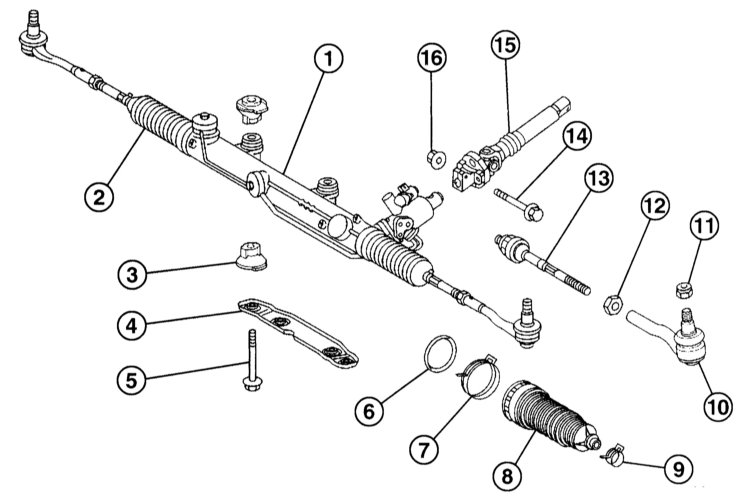
Elements of the rack and pinion steering mechanism:
1 - rack and pinion steering gear;
2 - protective cover right;
3 - lower support;
4 - locking bar, for steering at the cross member;
5 - M12 bolt;
6 - sealing ring (protective cover repair kit);
7 - large clamp (protective cover repair kit);
8 — left protective cover (protective cover repair kit);
9 - small clamp (protective cover repair kit);
10 - tie rod end
11 - nut, 55Nm, self-locking, be sure to replace with a new one;
12 - nut M14;
13 - steering rod;
14 - M8 bolt;
15 — steering column;
16 - nut M8.
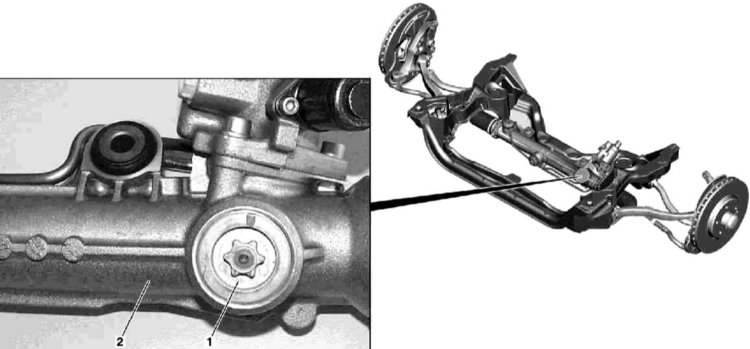
Steering rack play compensator:
1 - Steering rack backlash compensator;
2 - Steering gear housing.
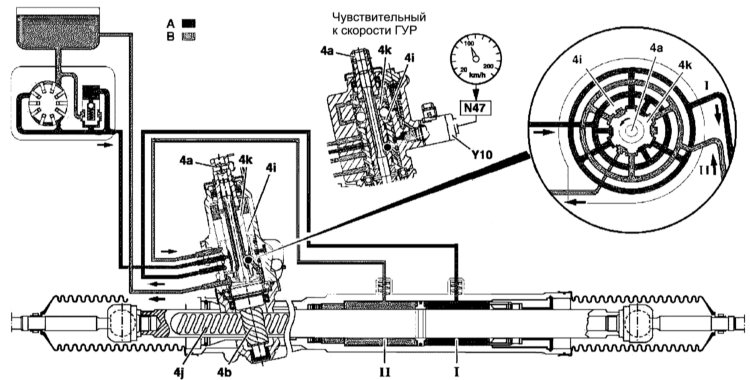
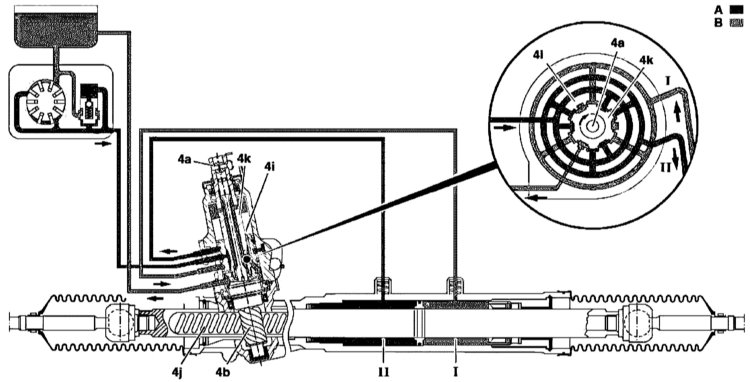
Hydraulic circuit and vehicle speed sensitive steering components:
4a - torsion bar;
4b - drive gear;
4i - control sleeve;
4j - transfer rack;
4k - bladed gate;
A - under pressure;
B - without pressure;
I - right slave cylinder (left turn);
II - left slave cylinder (right turn);
Y10 - SPS solenoid valve;
N47 - control unit for anti-slip and stabilizing systems.
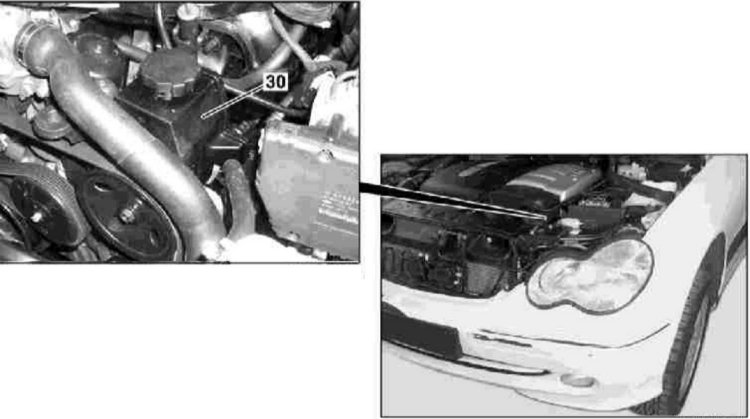
30 - location of the power steering pump.
The steering consists of a steering wheel, a steering column, a steering gear in the form of a rack and pinion gear and steering gear rods. The steering column transmits the movements of the steering wheel to the steering mechanism. The gear rack of the steering mechanism moves to the right or left in accordance with the steering wheel. Tie rods through the hinges and the steering knuckle transmit steering forces to the front wheels.
The rack and pinion transmission of the steering mechanism is backlash-free and does not require maintenance. As part of the maintenance, it is only necessary to check the protective covers and dust caps of the tie rod ends.
The steering of the car has a hydraulic booster, which reduces the effort applied to the steering wheel. The gain increases as the speed increases. The hydraulic booster contains a hydraulic pump and a working fluid reservoir. A hydraulic pump draws fluid from a reservoir and delivers it at high pressure to a control valve in the steering box. The control valve has a mechanical connection with the steering spindle and directs the fluid, depending on the rotation of the steering wheel, into the corresponding cavity of the working cylinder in the steering gear housing. Here, the fluid acts on the piston and thus supports the control process. At the same time, the piston squeezes the liquid out of the opposite cavity of the working cylinder through the return pipeline into the liquid reservoir.
Speed Sensing Power Steering (SPS) Operation
The electronic control of the SPS solenoid valve Y10 is carried out by the control unit N47 depending on the vehicle speed.
When the steering wheel is rotated, the drive gear acts on the rack. The rotating slider rotates around the control sleeve by means of a torsion bar and abuts against the rail, which leads to a change in the relative position of the control grooves. In this case, the flow of oil under pressure is fed into the chamber of the right or left slave cylinder, causing the rack to axially move in the corresponding direction. Oil from the unloaded slave cylinder is displaced and through the open return grooves in the control sleeve is sent back to the steering pump reservoir.
Security measures
Welding and straightening works with steering elements are not allowed. Self-locking bolts and nuts, as well as bolts and nuts that are corroded, must be replaced with new ones.
Note:
The tightening torques of the screwed connections must be strictly adhered to.
The driver's airbag is located in the steering wheel. The airbag is a folding air bag that is filled with air in the event of a frontal collision of the vehicle and thus protects the driver's upper body and head. In the event of a frontal collision of the appropriate severity, the control unit sends a signal to the airbag igniter. The explosion produces a gas that inflates the pillow within a few milliseconds. This time is enough to dampen the movement of the forward moving upper body of the driver. Then, within a few seconds, the airbag folds back in as it gases exit the pillow through the holes.
The article is missing:
- Quality photo repairs
Source: http://www.auto-knigi.com/model/mb_c/12_5_1/
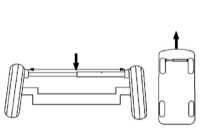
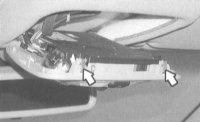
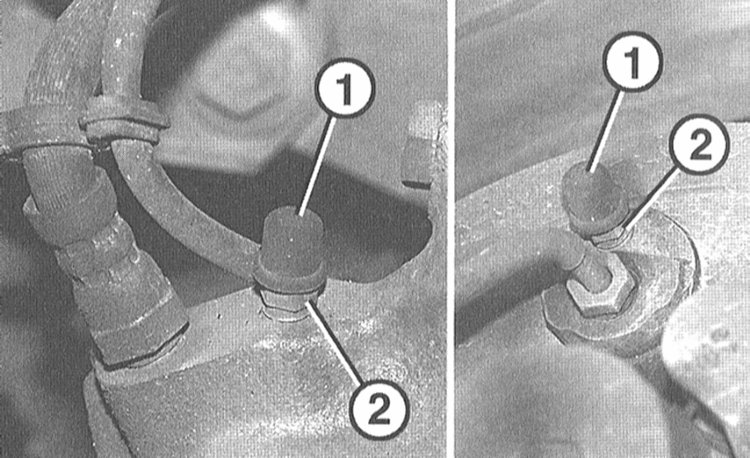
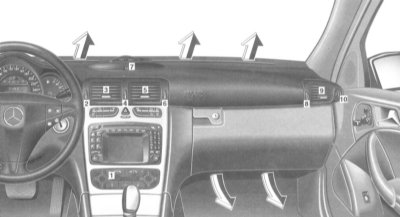
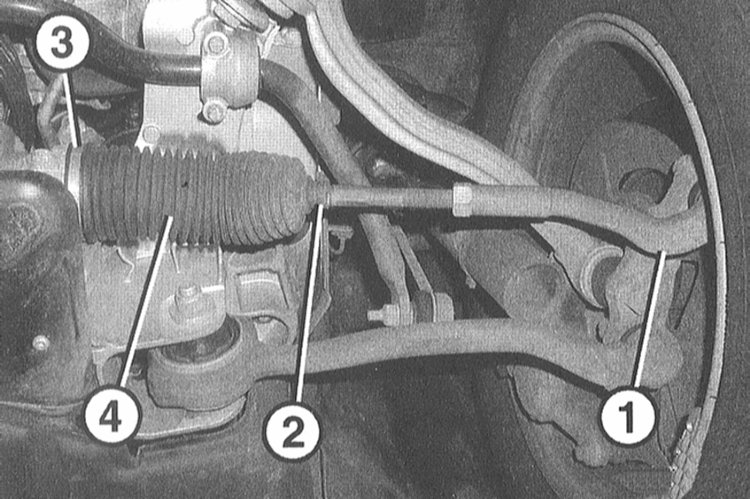
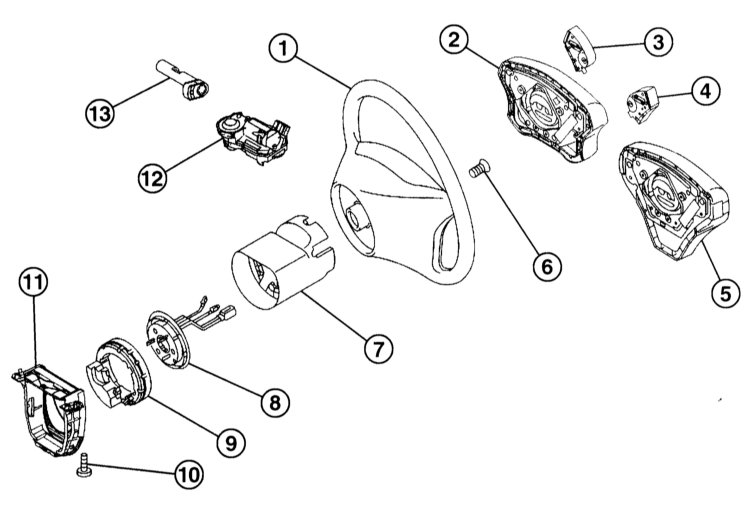
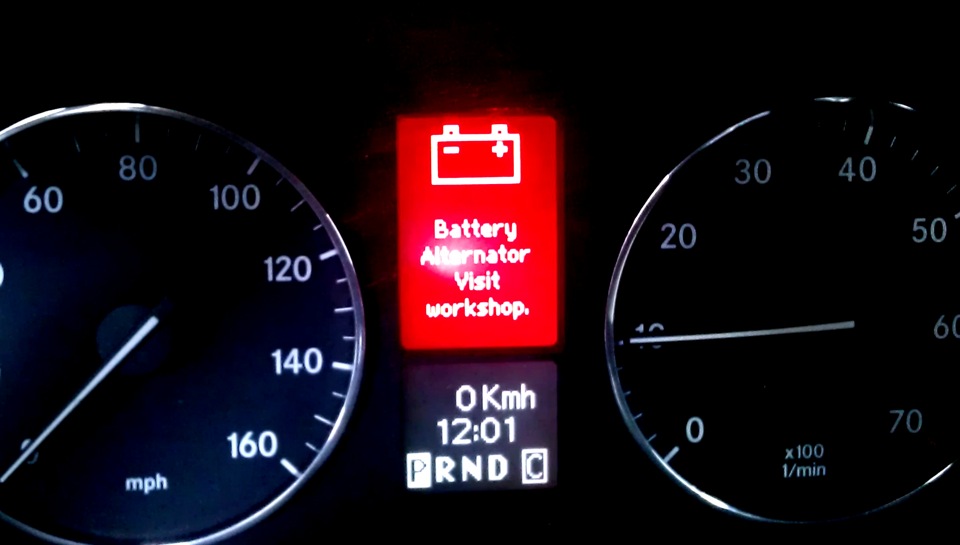
![W203/S203/CL203 [2000 - 2004]](/uploads/mercedes-c-klass-w203.jpg)
